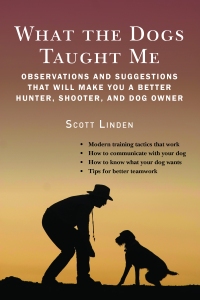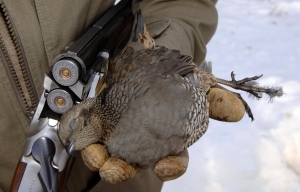Remember in the movie “Cool Hand Luke,” where the sneering, brutal prison warden says to Paul Newman’s character “what we have here is a failure to communicate?” It’s a new low in not getting what either of them want, simply because they can’t – or don’t want to – make their respective points clearly.
When it comes to your dog, being clear and concise is critical to success. If your dog understands precisely what you want from him, he will be more likely to perform well in the field, in the yard and in your home. If you know what your dog needs, you can help him better understand you.
I give seminars and talks at events all over the country, and a recent talk at Pheasant Fest generated some spirited feedback and fascinating stories of other dog owners’ trials, tribulations and triumphs. The most intriguing discussion in the aisle had to do with which words to use for which commands, and why. Here’s my take:
In my mind simple is better. According to the U.S. Army, your pup could conceivably understand over 200 different commands. But not at my house. I give my dogs easy to yell names . . . one or two syllables. That way, they learn their unique signal faster. Furthermore …
Sound-alike conflicts are a major bugaboo. Many of our commands can sound like names. Call your setter “Beau,” and he might “whoa” when you want him to hunt on. Rover sounds like “over,” a common command among retriever handlers. And “no” sounds like Beau or whoa, adding to the confusion.
I strive for distinctive words for each desired action. Momma dog uses “aagh” when she disapproves . . . why not take advantage of genetics and use it too? (It may be academic. At our house, most dogs’ first names end up being “goddammit,” at least early in their careers.)
“Here” is easier to yell than “come.” But “heel” and “here” sound the same, so my “heel” command is “walk.” I don’t use “over” when I want my dog to change direction, I use “way” as the command, often accompanied by a hand signal. My release command can’t be “okay,” or there’ll be more confusion. And he might think I’m asking him to hold still … “stay.” ”Alright” is safe and sounds like nothing else in the lexicon.
I have a theory that most times, dogs simply hear the vowel and ignore the consonants. Testing this theory on Buddy probably doesn’t prove much besides I’m a bad trainer, but it seems to ring true. At Pheasant Fest, one of my new friends disputes this theory and offers various command words and tricky situations where he has tested his dogs and they have learned the difference. More power to ya, Andy. But as I said, for me and Buddy at least, simple is better.





